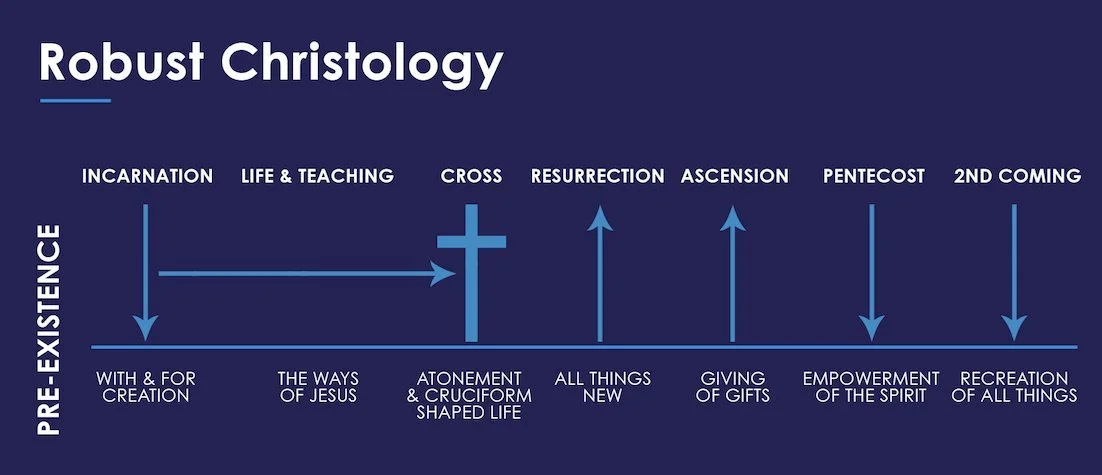10 Crucial Cultural Shifts
“The first responsibility of a leader is to define reality.” ~ Max DePree
How can we help the church recognize the urgent need to rethink its approach to church, mission, discipleship, evangelism, and church planting? A crucial step is naming and bringing attention to the significant changes outside the church. Below are ten essential cultural shifts that the church must understand to make meaningful changes and develop a strategic path forward.
1. Rise of the “Nones”
The term "nones" refers to individuals who, when asked about their religious affiliation, identify as having "none." This group includes people who may consider themselves spiritual but not religious, as well as atheists, agnostics, and those who are indifferent or disengaged from organized religion. Currently the “nones” represent about 30% of the adult population of the United States, up from 18% in 2010.
2. Decline in Church Attendance
The decline in weekly church attendance in the United States has been both steady and significant over recent decades. In the 1960s, nearly 50% of Americans reported attending church weekly. By the late 1990s, only 40% reported weekly attendance. More recent data shows an acceleration in the decline. According to Gallup, weekly or near-weekly church attendance dropped to 22% in 2020. In 2023, approximately 18% of U.S. adults reported attending religious services weekly.
3. A Networked World
With the global exchange of ideas made possible by the internet, social media, and international travel, people are constantly exposed to different religions, philosophies, and spiritual practices. This widespread access to alternative beliefs can challenge the exclusivity of Christianity and lead people to explore or adopt beliefs and practices that seem more adaptable or aligned with their personal experiences and values.
4. Emphasis on Racial Reconciliation and Diversity
There is a renewed focus on racial justice and reconciliation within the church, with calls for more diverse and inclusive communities. Churches that are predominantly led by people from similar ethnic, cultural, or socioeconomic backgrounds may inadvertently create an environment where others feel unwelcome or invisible. Today, where inclusivity and acceptance of diversity are highly valued, people want to feel that they belong in the communities they join. Young people, especially, tend to gravitate toward communities that reflect the diversity of the world around them, making the church less appealing if it doesn’t demonstrate inclusivity.
5. Cultural Polarization and Political Entanglement
The polarization in society has seeped into the church, sometimes causing division along political lines. In recent decades the church has become closely associated with certain political movements and ideologies. This has been especially evident in the case of conservative evangelicalism, which is often linked with right-wing politics. However, political entanglement can be found across the spectrum, with some churches aligning with liberal or progressive causes. This perception alienates not only those who disagree politically but also those who simply want a space where they can explore faith free from political pressure or agendas. The younger generation, particularly Millennials and Gen Z, generally view the church's involvement in politics with a high degree of skepticism and concern.
6. Distrust in Authority and Institutions
There is an increasing erosion of trust in traditional authority figures and institutions, such as governments, religious organizations, law enforcement, and media outlets. Trust in religious institutions has been shaken in recent years due to numerous high-profile scandals and cases of moral or financial misconduct among religious leaders. For many people, these incidents reinforce a negative view of the church as an institution, leading them to question the authenticity and authority of religious leadership.
7. Increasing Focus on Mental Health
There is a growing awareness of mental health issues and the church’s role in addressing them. Many people are seeking spiritual communities that support mental wellness, pushing churches to incorporate mental health awareness and resources in their ministries. This necessitates a renewed commitment to creating safe spaces where individuals can find emotional, psychological, and spiritual support, demonstrating the church's role as a holistic refuge for healing and growth.
8. Changing Family Dynamics
With more diverse family structures, including single-parent families, blended families, and non-traditional households, the church is challenged to expand its support and programming beyond the “nuclear family” model. Embracing a broader understanding of family can help churches meet the needs of a more diverse membership.
9. Growing Interest in Environmental Stewardship and Creation Care
Greater emphasis on environmental stewardship and sustainability is shaping how the church engages with issues like climate change, requiring a more thoughtful theology of creation care. Churches are called to be proactive in advocacy, education, and practical actions that demonstrate care for God's creation.
10. Deconstruction
Unlike the previous 9 shifts, this last one is taking place inside the church. Many Christians, especially younger generations, are going through a process of deconstruction. They are questioning doctrines, cultural norms, and institutional structures they feel may not align with the core teachings of Jesus or the realities of modern life. This process often includes rethinking issues like gender roles, sexuality, authority, and the church's relationship with politics and social justice. Rather than abandoning faith entirely, many young people seek a more authentic, inclusive, and compassionate expression of Christianity that resonates with their values and experiences. Deconstruction is, for many, a path toward reconstructing a faith that feels more in line with their understanding of the ways of Jesus.


